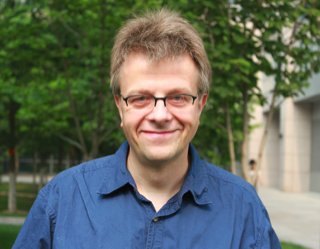Mesoamerican languages at UB
The Mesoamerican linguistic and cultural area stretches from the Valley of Mexico in the North to the northern Honduran border on the Caribbean coast and well into Costa Rica on the Pacific Coast. The Mesoamerican languages comprise five unrelated families: Otomanguean; Aztecan (a branch of the larger Uto-Aztecan language family); Totonacan; Mixe-Zoquean; and Mayan. A number of further Mesoamerican languages are isolates or of uncertain genealogical grouping. The Mesoamerican languages have long been recognized as forming a sprachbund or linguistic area. Many millennia of intensive contact have changed the members of the various unrelated language families so as to enhance their compatibility in formal and semantic categories.
UB Linguistics students and faculty have and continue to be engaged in field research projects on five indigenous languages of Mexico: Ayutla Mixe (R.Romero), Juchitán Zapotec and San Lucas Quiaviní Zapotec (G. Pérez-Báez),Yucatec Maya (J. Bohnemeyer), and Seri (C. O'Meara). The first four are Mesoamerican, while Seri is spoken to the North of the Mesoamerican area, and it is a question of ongoing research whether it shares some of the Mesoamericanareal traits.
Joshua Benn has been studying Zapotec (Otomanguean) languages spoken in and around the Isthmus of Tehuantepec region of Oaxaca, Mexico, since 2013. Work for his thesis focuses on the phonology and verbal morphology of the Zapotec spoken in the municipality of Santa María Guienagati, where he has also contributed to efforts towards the revitalization of that language. Additionally, Benn is interested in the internal classification of the languages that constitute the Central branch of the Zapotec family.
Dr. Jürgen Bohnemeyer has conducted field work on Yucatec Maya since 1991. Yucatec is the largest member of the Yucatecan branch of the Mayan language family. It is spoken by approximately 760,000 people in the Mexican states of Campeche, Quintana Roo, and Yucatán, and approximately 5,000 in the Cayo District of Belize (Ethnologue 2005). Yucatec is the language whose autodenomination, Maya, has been adapted by scholars to name the Mayan language family. Dr. Bohnemeyer has worked extensively on the expression of spatial, temporal, and causal relations and on argument structure and lexical aspect in Yucatec.
Carolyn O'Meara, a recent graduate of the Ph.D. program in Linguistics at UB, has been conducting fieldwork on the Seri language since the summer of 2004. The Seri people live in the state of Sonora, Mexico in two small coastal villages along the Sea of Cortez. The Seri language is an isolate which has been associated with the Hokan stock, although this classification is questionable (see Marlett 2001). O'Meara's current research focuses on spatial representation in Seri and the way Seri people conceptualize and talk about the landscape they inhabit.
Gabriela Pérez Báez holds a Ph.D. in Linguistics from the University at Buffalo and is currently Curator of Linguistics at the Smithsonian Institution's National Museum of Natural History. Dr. Pérez Báez has conducted research on Zapotec languages since 2002, studying factors of language maintenance and endangerment, analyzing spatial semantics and conducting language documentation with a focus on lexicography. Zapotec languages are mostly spoken in the southwestern Mexican state of Oaxaca, and present rich dialectal variation and as a result, constitute a challenge in terms of language vitality evaluation, documentation and standardization.
Rodrigo Romero, another graduate of the Ph.D. program in Linguistics at UB, has conducted research on South Highlands Mixe (Ayutla Mixe) since 2003. South Highlands Mixe is one of the four languages from the Mixe branch of the Mixe-Zoque family, spoken in the state of Oaxaca, Mexico. Romero has focused on the more endangered Ayutla dialect. Part of Romero's fieldwork has been dedicated to documenting the language, collecting folk tales and stories, as well as oral history narratives about the community. He is also working on the description of the grammar and lexicon of the language. Romero has done semantic research on distributives, temporality and spatial representation in Mixe.
Ashlee Shinn is currently in the Ph.D. program in Linguistics at UB, and has just begun field work on Yucatec. Shinn's current research focuses on spatial semantics in Mesoamerican languages- specifically the relationship between the encoding of shape and visual cognition.
